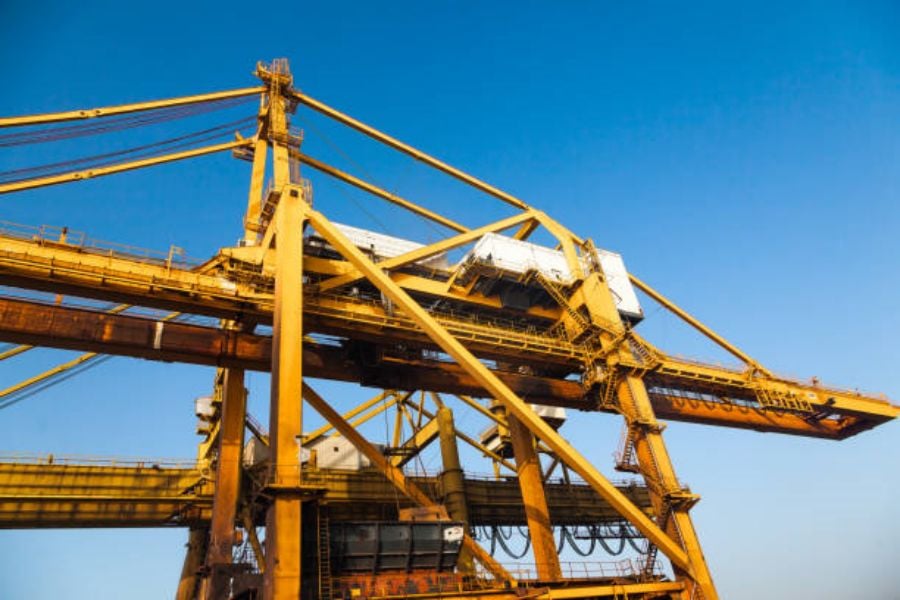Table of Contents

Introduction
Overhead travelling cranes, also known as bridge or gantry cranes, are commonly used in industries such as construction, manufacturing, and shipping to move heavy loads and equipment. In this article, we will take a closer look at the features, benefits, and applications of overhead travelling cranes.
Types of Overhead Travelling Cranes
There are various types of overhead travelling cranes that cater to different needs and applications. Some of the most popular types include single girder, double girder, underslung, and jib cranes. Single girder cranes are suitable for lighter loads and shorter spans, while double girder cranes are designed for heavier loads and longer spans. Underslung cranes are ideal for buildings with low headroom, while jib cranes are used for moving loads horizontally or vertically in a limited range.
Components of Overhead Travelling Cranes
An overhead travelling crane typically consists of several key components that work together to lift and move heavy loads. These include the bridge, runway, hoist, trolley, and end trucks. The bridge is the main load-bearing structure that spans the width of the work area. The runway is the rails that the crane travels along, and the trolley is the mechanism that moves the hoist along the bridge. The end trucks are the wheels or castors that support the bridge and hoist.
Benefits of Overhead Travelling Cranes
Overhead travelling cranes are often preferred over other types of lifting equipment due to their numerous benefits. For example, they can move large and heavy loads smoothly and efficiently, and they can operate at high speeds while maintaining precision. They also reduce the risk of injury and damage to products and equipment during handling and transport, and they can be customized and tailored to meet specific needs and requirements.
Applications of Overhead Travelling Cranes
Overhead travelling cranes are used in various industries for several applications. For instance, they are used in construction to lift and transport heavy building materials such as steel beams, concrete slabs, and pipes. In manufacturing, they are used to move large and heavy products between workstations or assembly lines. In shipping, they are used to load and unload containers and cargo from ships and docks.
Safety Considerations
When using overhead travelling cranes, safety should be a top priority. Safety measures such as regular maintenance and inspections, proper training for operators, and compliance with safety regulations and standards should be followed at all times. It is also important to conduct a thorough risk assessment and identify and mitigate potential hazards and risks associated with the use of overhead travelling cranes.
Installation and Maintenance
Proper installation and maintenance of overhead travelling cranes is crucial to their safe and efficient operation. The installation should be performed by qualified professionals who are familiar with the local building codes and safety regulations. Maintenance should also be carried out by authorized experts according to a regular schedule to ensure that the crane is in good working condition and prevent breakdowns and accidents.
Cost and ROI
Overhead travelling cranes can be a significant investment, and their cost depends on several factors such as the type, size, and capacity of the crane, as well as the installation and maintenance costs. However, they offer a good return on investment by improving productivity, reducing labour costs, and increasing safety. The cost of downtime and accidents caused by inadequate lifting equipment can far outweigh the cost of investing in a reliable and high-quality overhead travelling crane.
Customization and Tailoring
Overhead travelling cranes can be customized and tailored to meet specific needs and applications. For instance, they can be equipped with accessories such as magnets, clamps, and hooks to handle different types of loads. They can also be designed to address unique challenges such as limited space, low headroom, or harsh environments. Customization and tailoring can improve the efficiency, versatility, and safety of the crane.
Conclusion
Overhead travelling cranes are a versatile and essential piece of equipment for many industries, providing various benefits and applications. By understanding the different types, components, and safety considerations of overhead travelling cranes, businesses can make informed decisions about their investments and ensure safe and efficient operations.
